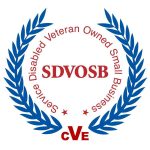by jcooper131 | Mar 2, 2017 | Houston Mediation and Arbitration

In a recent article I read, the author talked about how technology is disrupting the way work is done both nationally and internationally. Companies like Facebook and Uber have, within a few short years, achieved market values greater than 80 percent of the companies on the S&P 500. They have corporate structures, processes, and systems, but unlike the large corporations that have been around for decades, they do not have thousands of employees.
More than just the computer, technology is disrupting business models across the world and rendering many traditional methodologies obsolete. Brick and mortar stores like Macy’s and jcpenney are struggling to create new workable models in an environment where technological innovation is forcing a brutal transformation.
Add to this many companies are merging, and their organizations are growing more complex as their size increases. Managing these larger, more complex organizations successfully is a daunting task. Managing Ethics and Integrity issues in these demanding times also grows more challenging. The near constant demand to control costs in a low growth, low profit world puts intense pressure on companies to find savings. Many times training programs of all kinds become an easy target; ethics and integrity training included.
This unrelenting pressure claims high-profile victims every year. Whether it’s Wells Fargo Bank’s epic ethics failures, or MD Anderson’s failure to follow basic rules in placing millions of dollars in contracts involving a state of the art technology created by IBM, the number of companies that fail to comply with their compliance obligations grows each year. There is an area of risk that risk managers content with almost daily. Regardless of the fact that most companies have a range or resources that focuses on compliance and ethics, they do not provide certainty. The number of companies that must work under a Consent Decree or Deferred Prosecution Agreement give proof to that reality.
The list of companies that fail to meet requirements and standards grows every year, and companies struggle every day to avoid being added to the list. The question one needs to ask is if the old business models are being transformed as we speak, why do so many companies still rely on canned training programs that drive managers and employees to check the boxes at the appropriate places?
If the example of Wells Fargo and dozens of other companies teach us anything, it is that existing programs do not drive the cultural changes necessary for modern complex organizations to succeed long-term. We at The Ethics Workshop believe that a series of relatively small incremental steps, consistently applied and reinforced over time, will sow the seeds for real cultural changes in this demanding environment. We invite you to reach out to us and consider having a brief conversation. You have nothing to lose and potentially something to gain. To learn more please visit our website to view these offerings in more detail.
Each month I remind my readers in and around the Houston area that I support a business cooperative called Services Cooperative Association. SCA is an non-profit entity that helps people become successful business owners and entrepreneurs and it does this through regular workshops and a variety of training options. If you know someone with the desire to start a business, invite them to visit the website.
Food for Thought: Character cannot be developed in ease and quiet. Only through experience of trial and suffering can the soul be strengthened, ambition inspired, and success achieved. (Helen Keller)
by jcooper131 | Feb 8, 2017 | Houston Mediation and Arbitration

Defensive Fort
All across the country in companies large and small annual reviews occur between a manager and the employees reporting under him or her. In the course of conducting this performance review, one of the areas that almost all performance appraisals include is how well the manager and employee communicated.
Whether the person being evaluated got a very good score, or something less, the inevitable result is that the evaluation will leave room for improvement, and will include suggestions to that effect.
But what if you find yourself involved in communication that is not intended to get things done – at least in a way that will advance the goals and objectives that matter. What about communication that does the opposite? In work environments where conflict goes unresolved communication isn’t about getting things done. There individuals begin talking over each other, going around each other, and working at cross purposes. The consequences of unresolved conflicts is significant.
Communication becomes the vehicles by which the combatants in a conflict build their defenses. They defend their positions in a conflict before any consideration about how it affects the work. Any criticism or complaint, no matter how small, becomes an imperative that must first be defended against and then challenged.
In this environment it is critical that encouraging and positive statements be maximized and that body language fully complement the language being used. When there is a disconnect between the words and the speaker’s body language, any effort to de-construct the defenses of employees in a conflict will quickly lose credibility.
Social scientists have developed a significant body of empirical data that non-verbal communication often sends messages more clearly that words. When I am asked by client about assisting in resolving work place conflict, this is one of the areas I focus on almost immediately. I emphasize the importance of choosing carefully how words are used, by whom and where, and review non-verbal elements that can undermine their efforts.
There are many ways that body language can undermine someone’s efforts to resolve a dispute. One of the suggestions I frequently make to managers and supervisors is to always hold those discussion where everyone is sitting in a straight backed chair. Nothing robs a manager’s credibility quicker than the parties in conflict sitting in the manager’s office in “visitor chairs”, and the manager is in a chair where he ca swivel and look away or lean back. Nothing creates a more powerful message of “I am not as involved in this as you” or even worse “I am really being patient here so let’s hurry it up”.
We at CDC Integrated Services are ready to answer questions or to meet for more detailed discussions. Visit us here to find your answers.
by jcooper131 | Dec 27, 2016 | Houston Mediation and Arbitration

Turning the Wheel of Conflict
In mediation disputes the past does matter. Earlier this fall I wrote about the Wheel of Conflict, a concept introduced in a book written by Professors Bernard Meyer and Christopher Moore. In their analysis of conflict, a series of common themes interact with each other; some more heavily than others. Yet, they all play a part in the dynamics of a conflict.
Spin the wheel and the arrow will eventually stop on “history”. What does the history of the parties to conflict tell a mediator about the nature of that conflict? An experienced mediator knows that this is a key element in any conflict and it must be described and expressly recognized so that any decisions reached build important elements of continuity that have value in resolving the conflict.
People that view conflict through the prism of their experience in the business world can have a distorted understanding of how conflict is resolved. For many it is a problem that is taken outside the normal processes so that work can move forward. The fact that it is often moved outside of the normal processes sometimes results in people involved a conflict not having the opportunity to resolve underlying issues; which can color or adversely impact all future relationships involving the parties to the original conflict.
Sometimes the parties to a conflict stay involved all the way to the resolution, and still those underlying issues can remain unresolved. Add to this dynamic the reality that many companies, being sensitive to accountability and diligence concerns, choose binding arbitration which generally solves the immediate issues, but does little to address the root cause of the conflict in the first place.
Some conflicts are easier to resolve than others. Family feuds can last beyond an individual’s lifetime, and the damage can be incalculable. In business disputes the goal is to resolve the conflict in way that preserves the relationship so that the work can move forward without further disruption. They are not necessarily easier to resolve, but the simple fact that people’s careers and livelihoods are often on the line tends to focus one’s attention on search for ways to solve disputes in a business environment.
What the parties to the conflict need to know about the other party matters. Failure to understand the motivations and values of the other party(s) to the conflict will lead to assumptions about the other party that are almost always wrong. The drawing of conclusions will create negative biases that can impede or damage progress, delay resolution of the issues, and even bring about long-lasting harm to a business relationship.
The above cannot be overstated. Whether you Kellogg protecting a cereal brand, Mattel defending a line of dolls, or Oracle protecting its software, the battles are costly, time-consuming, and damaging to the reputations of both parties in these types of disputes.
Mediation is often the overlooked avenue that prevents conflicts from escalating to the point they become a legal precedent or a case study in business schools, and these outcomes are legacies most companies want to avoid.
Want to know more about prevent or mitigating business conflicts? Contact us at www.cdci-mediation.com or by E-mail at info@cdci-mediation.com. We can also be reached by telephone at 832-452-8537.
I strongly support small business development. I do this through the Services Cooperative Association here in Houston. SCA helps people become successful business owners and entrepreneurs. If you work in Houston, Texas have breakfast with us at the Lakeside Country Club on Wednesday, January 11th, 2017. We will be hosting the 34th Annual Economic Forecast. Contact me for a ticket at a reduced price, or learn more about the event here.

by jcooper131 | Dec 27, 2016 | Houston Mediation and Arbitration

Before decisions comes the problem solving
I live and work in Houston Texas as do many of the people who read my letters and follow my blog. Many of you living here work for companies with a focus on or an involvement in oil and gas production. Others work in companies not related to oil and gas, but represent a number of other industries. No matter which industry, most of the companies over a certain size, have the following characteristics in common:
A compliance program conforming to the regulations and rules promoted by either the federal or state government.
An ethics policy
A credo stating the company’s foundational principles
Procedures and guidelines that incorporate clear standards of behavior
Training programs that direct managers and employees in understanding their obligations across a range of ethical issues.
For many companies these are important processes that go back decades. Companies spent tens of thousands of dollars to set up and implement these processes and spend thousands of hours and a significant amount of money each year managing these processes, analyzing and reporting on their adherence to and compliance with these requirements.
Last week I stood next to a client looking at a section of the Interstate that passes in front of his office about 100 yards away and some three stories below us. He noted that the real estate we saw in front of us had changed a lot in the 30 plus years he had been at that location, and that the way he did business had changed even more.
We had just finished a meeting where we were discussing some changes to the way his company approaches ethics training and it was a conversation that had some difficult moments for both of us because his company spent a lot of money to install and implement the processes that are in place and the training that supports it. He was still not convinced of the benefits to his operations.
As we stood there, I asked him to think about the fact that he and I are surrounded by companies that have all the above processes, including his company; all of them trying to get it right. Yet the landscape is dotted with companies that operate under a Consent Decree or Deferred Prosecution Agreement imposed by the Department of Justice because in spite of the above, they didn’t get it right.
That is the harsh reality of today’s compliance environment. It does not matter whether your company is in the oil & gas industry, banking, or retail, none of these processes and programs offer any level of certainty. Given the number of companies that fell short and paid sizable fines, and must now conduct their operations under the watchful eye of the government, the question becomes how to avoid being added to the list. My client thanked me for giving him such a warm and fuzzy feeling and said that perhaps we did need to talk more on the ideas we discussed, and he invited me back in the New Year to talk more.
The people who manage and administer a company’s compliance program well appreciate the difficulties they work under. For them it is a constant search for behaviors behind decision-making that do not conform to the standards, working to re-orient, and train managers and employees not to take the wrong action. Compliance professionals know full well that somewhere someone is taking a shortcut, intimidating an employee, or engaging in any number of actions that lead to unethical conduct, which if not corrected, will result in adverse consequences that are almost always severe and expensive.
Here at the Ethics Workshop, a division of CDCI we help our clients focus on the human factor behind these processes and procedures. In our presentations and training modules we look for ways to have conversations that promote an organic approach to ethics. To learn more please visit our website to view these offerings in more detail.
If you read my letter on a regular basis you know that I support those starting new businesses or looking to grow their business, and I offer that support through an organization called the Services Cooperative Association. The SCA is hosting an economic forecast on January 11, 2017 and the keynote speaker will be Mr. Chris Brown, Houston City Comptroller. Also speaking is Professor Sophi Haci of the economics department of Houston Community College who will give an overview of the Texas economy. It will the 34th year that SCA sponsors this event and I invite you to visit the announcement here to learn more about it and put it on your calendar.
Thought for the day and one of my favorites: “Failure isn’t fatal, but failure to change might be” (John Wooden).
by jcooper131 | Oct 25, 2016 | Conflict, Disputes, Ethics, Mediation, Negotiation

After the Shock Wave
This week’s blog can also be called Ethic’s Seismic Fracture, and here is why.
Wells Fargo Corporation opened fake bank accounts and fake credit card accounts, and charged its customers fees for accounts they did not know existed. These actions were both illegal and unethical and will have significant consequences for all those involved. It has all the trappings of a soap opera scandal and everyone is piling on adding his or her opinion wherever they can. But the story is not over and I think there is more to come.
This is an ethical failure of seismic proportions, and I will likely write about it in a future letter, but it is too soon because I don’t believe we know the whole story. It does offer an excellent segue into a related issue that I think is relevant to this story.
An article in the Harvard Business Review discussed the subject of listening and why this is such a critical skill for CEOs and other leaders. The author noted that a recent survey indicated as many as 25 percent of CEOs of major companies were either not good listeners or down right bad at it. The article went on to explain that this deficit at that level of leadership in a company can have severe consequences to the point of damaging the company. I think it’s safe to say the authors of that survey got that one right.
When such a deficit exists at the top level, imagine what the absence of this skill would mean in someone heading up a major business unit who must communicate and receive feedback from other business unit leaders. Information naturally flows up an organization making information transfers across the various organizations difficult at best, but it is made more difficult if the person in charge of one of these organizational structures does not listen well.
Think for a moment about a company much like Wells Fargo where employees at multiple levels in an organization are trying to convey important information up the chain of command; information that signals the train is going too fast and is about to go off the tracks, but that information doesn’t move up the organization. It meet resistance that shows itself in several ways. These can be procedures that require detailed explanations and lengthy reviews for no apparent reason, a set of well-established routines that do not conform to any written procedures or policies and which cannot be bypassed, and a culture that says to the average manager or employee “make your numbers first and save your complaints for later…” The transition from poor listening skills to an un-willingness to listen is a very short step.
One of the most important skills a leader has is the ability to listen. It is one of the ingredients of leadership that separates a leader from the rest of the crowd. Does this mean that you can’t achieve a leadership role without this skill? No, it doesn’t; a person can achieve a leadership role in a company or organization without this skill, but the chances of doing well in that position are significantly diminished without it.
The leaders at Wells Fargo failed in their leadership role. It is not the first company to suffer a severe failure of leadership, and it won’t be the last. As more time passes I think we will find there were ample opportunities to change the work ethic in that company, but the warning signs were ignored. I believe the failure to listen at various levels of the organization was the catalyst that sowed the seeds for disaster.
Successful leaders learn early in their careers that listening is part of a process designed to produce communication with others that works so that misunderstandings are reduced or eliminated. I encourage those who read my letter each month to read, or if you have already, then re-read Stephen R. Covey’s book The 7 Habits of Highly Effective People. He understood that listening, especially empathic listening requires training. Sometimes leaders trained themselves to achieve this level of listening, and sometimes leaders found someone to teach them how to achieve this level of listening.
In chapter 5 of his book Stephen Covey wrote that there are several principles of communication and he begins by saying “seek first to understand then to be understood”. I believe those principles are as valid today as when he wrote his book some 30 years ago.
The idea that you first needed to understand the person you were talking to was a completely foreign concept to the vast majority of people. In the business world of that era it was seen as an impractical point of view, and that view was not hard to understand in that most communication at time was directive in nature where the boss told his employees what to do and when he wanted it done and the employee was expected to figure it out.
I am firmly convinced that empathic listening as he wrote about has a sound ethical foundation and provides the best framework for building listening skills of the scope and reach that will separate you from the crowd, and sustain you in your role as a leader.
A strong ethical culture requires the right kind of action. Listening is an action and so it must be supported by the right kind of action to be successful.
Food for thought: Great readers and great listeners all have great work ethics. They work hard at what they do and they are devout about their reading and listening. (Andy Wilkinson)
CDC Integrated Services believes that small businesses are the foundation of ingenuity and supports the efforts of the Services Cooperative Association in Houston in its efforts to foster and promote entrepreneurship
by jcooper131 | Sep 6, 2016 | Houston Mediation and Arbitration
 This is the third post in my series of comments on the Wheel of Conflict developed by professors Bernard Mayer, Ph.D. and Christopher Moore, Ph.D. In developing the graphic illustration of the different factors that drive conflict, these two gentlemen placed Emotion immediately after Structure. There are sound reasons for their decision to place where they did because emotions drive one’s actions, behaviors, and even thinking.
This is the third post in my series of comments on the Wheel of Conflict developed by professors Bernard Mayer, Ph.D. and Christopher Moore, Ph.D. In developing the graphic illustration of the different factors that drive conflict, these two gentlemen placed Emotion immediately after Structure. There are sound reasons for their decision to place where they did because emotions drive one’s actions, behaviors, and even thinking.
More than 50 years of research offer compelling evidence that emotions strongly shape most decisions, and are a key driver of behavior, and are often the impetus behind conflicts in the workplace and even between companies. Emotions are not uniformly negative as both science and history teaches us. Strong emotions can drive people to achieve extraordinary things; even anger can generate positive outcomes.
But the converse is equally true in that emotions such as anger can create a negative and damaging environment in the workplace and is often the driver behind many workplace conflicts.
Psychologist John D. Mayer argues that emotions carry a physical aspect when they bridge thought, feeling, and action and can impact a person’s physiology both positively and negatively depending on the level of stress being felt at the time of the decision/action. This simple truth has been experienced by anyone confronted by a demanding task coupled with a critical timeline.
Managers and supervisors often fail to recognize that decisions people make in the workplace are judged, by those making the decision or taking the action, on the basis of the risk to themselves. That perceived risk strongly influences their decisions or their actions. Someone who feels anxious about the impact of the outcome on him/her may choose a more conservative approach, involve others, take longer to execute the task, and potentially sacrifice the best outcome for one that is safe.
A negative work environment will drive other negative behaviors. Doing the safe thing can lead to doing only the least necessary to stay “under the radar”, and it can lead to other more damaging behaviors such as missing schedules, making excuses, asking others to do the work for you.
Managers and supervisors need to develop an active awareness of those situations where emotions can have an adverse effect on the work, the cohesiveness of the group, and the productivity that is necessary to produce the necessary outcomes, and they must be able to react in a constructive way to avoid the potential for conflict without creating reasons for greater anxiety and uncertainty.
Want to know more? Visit us at www.cdci-mediaion.com or call us at 832-452-8537.
by jcooper131 | Aug 15, 2016 | Houston Mediation and Arbitration
Direct from The Ethics Workshop. Have you been to the library recently?
Well, come join us at the Kendall Branch of the Houston Library (see below) on August 25th.

Experience an Introduction to:
A NEW DYNAMIC – DOING THE RIGHT THING AT THE RIGHT TIME FOR THE RIGHT REASON®
Mark down the date and location shown below. Spend just two hours with us and you will learn about the building blocks for a more dynamic culture in the workplace.
Behavior drives failure and behavior drives success. Lean how to prevent/mitigate failure and increase success in your work.
WHAT WILL BE COVERED
In two hours YOU will learn:
That doing the right thing sets the stage.
That doing the right thing at the right time defeats failure
That doing the right thing for the right reason is the difference between success and great success.
In two hours find out how these building blocks apply to real life situations and can transform a department or a company.
AUGUST AT THE LIBRARY – join us on the 25th from 1:15 to 3:15 PM at 609 N. Eldridge Parkway, Houston, TX 77079.
HOW MUCH DOES IT COST?? WOW! YOU ARE IN LUCK. For this day only it is FREE.
The regular price for this is event is $189.00 per person, but we are introducing it to businesses in West Houston and Katy on the date indicated above through this no cost introductory offer.
To register, or for more information about other dates, please contact Jerry Cooper at: 832-452-8537, or at jerry_cooper@att.net.
Jerry P. Cooper
CDC Integrated Services, LLC
by jcooper131 | Aug 4, 2016 | Houston Mediation and Arbitration

In my earlier post I introduced the Wheel of Conflict created by Professors Bernard Mayer, Ph.D. and Christopher Moore, Ph.D. When you read their work and the work of other practitioners, the starting point is often a discussion about the role of structure as a source of conflict. The point the two authors emphasized was that many conflicts result from the dynamics that exist between a manager/supervisor and the employees that report to him or her.
The primary fact of any company’s or organization’s structure is they contain a hierarchy where the higher you are in an organization the more authority and power you have over the actions and decisions of others. The manager or supervisor is the key player in anticipating and mitigating the potential for conflict. Therefore, one of his/her primary rolls is avoid being the source of conflict.
In any department, group, or team conflict is inevitable because the members of that organization will have different views on how to advance the work and often there will be differences of opinion on how to proceed. These differences can be exacerbated by the realities that every organization faces: limited resources, limited time, budget constraints, and a range of other constraints as well.
The manager or supervisor has a critical responsibility to see that the structure under which the team operates does not become the problem. The organizational structure by design puts limits and controls over any process and the people there. The manager’s goal is to make those constrains as neutral as possible.
It often sounds trite, but the key to eliminating structure as a source of conflict lies in the way managers communicate with the other members of the team. What gets communicated, how it’s communicated and when are critical factors in how a team responds to the information they must work with.









